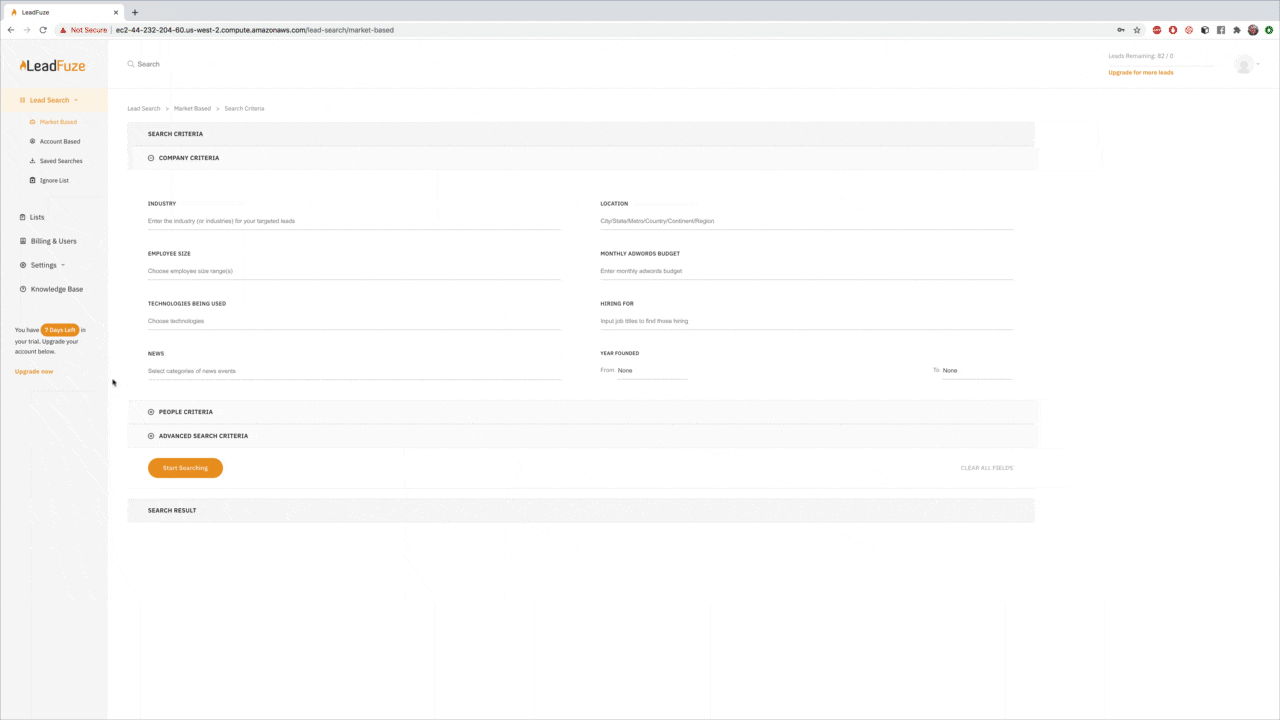Millions without jobs, projections of thousands losing their life and no idea of what things will look like when this is all over.
The current situation, all over the world, isn’t as dire as projected. There is hope for an eventual recovery, but when and how that takes place? Unknown.
Every industry is connected, much like the whole “six degrees of separation” thing.
Cruise lines, airlines, and hospitality; halted. In many states (and entire countries) all “non-essential” businesses are shut down. And right now, I don’t think people are picking up a new bedding set while they’re at Target — even while open.
You get it, I know.
But what do “post-pandemic sales” look like? It’s this question I’ll address in this guide. First, we’ll talk about what’s happening now.
The Current “During Pandemic” Scene
There are two broad camps, in terms of companies finding leads — shut it all down or ramp up our digital efforts.
Either companies are waiting until things open back up, hoping to hold on by cutting staff and costs. OR they are attempting to catch some new clients with shifting priorities. For instance, if an agency can keep a business’ current marketing strategy going for less than the full-time marketing person/team — that agency can pick up the work.
So, they advertise.
Notice an uptick of ads in your feeds? That’s them.
The rest of this guide covers selling in a world that is recovering and weary. We discuss:
- What changes: Things that won’t work (at least for a bit)
- “New” sales techniques: The future of sales
- Scaling efforts: Building a sales infrastructure for whatever the future holds
What Changes in Post-Pandemic Sales
There are a number of things we know about the recovery. Namely, it’s not going to be instant. Opening things back up will likely be in stages over the course of months. Some things may come back even slower.
To be blunt, if you’re business relies (in part or the whole) on the following three measures to run and grow your business — change immediately.
1 Conferences
Conferences were the primary mode of interaction for many. Technical trade shows, finance industry professionals and software companies travelled the globe to highlight their value proposition.
Obviously, conferences aren’t happening, right now. When they come back (as they likely will), it may never be the same. Some people, who normally would have, won’t come. Venues may want temperatures checked upon entry and other dystopian measures are sure to arise.
Note: If you heavily rely on conferences to generate leads, time is of the essence here. I discuss specific measures further down.
2 In-House Staff
The idea of remote work is gaining traction and this pandemic gives it a serious shot in the arm. In all 50 states, non-essential businesses have only two options:
1. Close completely
2. Conduct business remotely
For some, this is an impossible task. Even businesses that are allowed to stay open (in a limited fashion) are struggling. At least one restaurant closed and doesn’t know if it’s coming back. We don’t know what “getting back to normal” looks like.
Many businesses will choose to remain remote, or at least be more flexible (e.g. 2 days a week from home). By utilizing a virtual assistant, businesses can maintain productivity while providing employees with the flexibility and autonomy to work from anywhere.
3 Meetings/Pitches
Ironically, in-person meetings and pitches are used to build trust. Being in the room with someone proves effort. Now, for a while, meeting in-person is likely to be for absolutely essential gatherings only.
Organizations which require meeting with new/current clients and even their teams will need to employ measures to communicate and onboard.
Note: Virtual meet ups and conferences have gained steam and are now sure to become even more popular. Here’s a great example of a “Virtual Connections” meeting.
4 “New” Sales Techniques for the New World
I guess you can tell these aren’t really new, given the quotation marks. But given how “easy” it’s been to generate and close leads for the past decade, they may seem foreign to many of us by today’s standards.
1 Reliable Lead Generation
We’ve covered conferences and meeting in person. Unless your cashflow is good and churn so low that you can stand to get by on referrals and word-of mouth for the next 1-2 years — new need new sources of leads.
Potential lead sources to consider:
- Cold Outreach: Cold outreach was effective before it was mandatory. At some level, virtually every company will have to embrace cold email outreach to a greater degree.
- Webinars/Virtual Events: Find that ideal offer and create content related to it. Then, get into a virtual room!
- PPC/Digital Ads: Some have cut their marketing ad spend to zero, while others are ramping it up. (Note: Be sure to pivot your pitch to the current situation.)
LeadFuze offers reliable lead generation software allowing you to automate your outreach. It’s a useful tool for all outreach, including filling up those webinars, following up with your PPC leads and cold email.

LeadFuze in action. Sign up to get 25 leads for FREE.
Further Reading: HubSpot has a great new virtual lead gen guide.
2 Pivoting Pitch
If you take away one point in this guide, make it this — the way you sell has to change…now.
Some pitches are value propositions are timeless. And we should all try to find that core offer that sells in any environment. However, when times are good, the copy on your sales pages and ads is likely different than when times are tough.
Your company may be too young to have existed during the “Great Recession“. But now is the time to learn why someone needs what you’re selling and pitch that directly to those who need it most.

(The ad above is a screenshot from Facebook. It’s a fantastic example representing where your pivot point should land. Sure, a lion will play with a tire at the zoo, but it will never pass up the sweet smell of food.)
Example: Accountants, accounting software and financial services are always necessary. In good times, it’s more about managing money smarter, investments, growth, etc..
Remember all of those programs from credit card companies offering to show you recurring charges? That helps people spend smarter. Now, people are looking at every single dollar and scrutinizing whether or not they’re needed. The service helps, but when people don’t care about $10 here or $7.99 there, it’s a “nice-to-have” feature.
In bad times, it’s (obviously) different.
Let’s say an accounting firm changes their pitch. Instead of helping startups manage their accounts of investment dollars, they offer to help businesses:
- Manage cash flow to maximize their runway
- Determine the best possible cuts to make based on data
- Calculate forecasts based on how the pandemic effects sales
These are services that businesses need. In fact, it could mean the difference between making it through or not.
Key Takeaway: Determine why your valuable, not just “nice-to-have”. Then, develop copy, pitches and other content around that value proposition.
3 Create Content
Your inbox flooded with statements about the current global crisis, too? What about emails for blogs explaining how your business can [insert topic here] during this time?
Companies need this type of content. It’s not going to rank, but it is going to do a few things, including:
- Help you develop your pivoted pitch (which helps your ads and sales copy)
- Reassure your current customers to keep them from leaving or ordering less from you
- Create content to put in your new email marketing and sales funnel to show new customers the value of your products/services
I mean, you are reading a post-pandemic sales guide, right now.
Blog content and white papers aren’t the only things you’ll need. Every written word on your site, in your campaigns and in your decks has to change in the age of this virus.
Note: It also wouldn’t hurt to (also) ramp up the value and frequency of your content. If you want to survive, it’s not the time to shrink back. Invest in production value and put in the work to produce more content than ever before.
Key Takeaway: Readjust your content to match with your pivoted pitch.
4 Enhance Tech
Everything I’ve mentioned;
- Webinars
- Remote work
- Lead gen
- Advertising
All of these come with both a learning curve and time investment. The right tech is going to help you every step of the way. Imagine trying to maintain a remote team only using the inbox. This can’t work, you’ll need a team messaging app and/or free project management software and video conferencing to keep everyone on task and sane.
Use tools and make sure they work together. Click To TweetIf you aren’t able to shake hands of potential leads at a conference, you have to get their email, LinkedIn and phone number another way. You get the idea. Putting a tech stack together on the fly is not easy, but it’s doable.
Key Takeaway: Use tools and make sure they work together. One of the best things to do is to ensure a software solution integrates well with the other tools you use. LeadFuze for example, integrates with several CRMs, email marketing tools, LinkedIn sales software (like Dux-Soup) and others to help you send leads exactly where they belong.
Scaling Efforts
Not going to sugar coat it. What you likely must do in order to survive the pandemic is completely overhaul how your business makes money. From the lead generation channels, to sales copy and the sales funnel itself. All of it tailored for the new world.
The good news is that once you do this overhaul, you’ll be among the first companies to thrive the changing landscape of business during the eventual recovery. My Great Aunt still eats pinto beans from a can, you know why?
She was raised during the depression. My point is that people will be skittish for years if this thing goes much longer. Organizations who adapt are going to win the day during those years. Right now —survive and find what works.

Then, you can scale and automate those channels — spreading that winning value proposition and catering to a financial skeptical crowd in the post-pandemic sales world.
Want to help contribute to future articles? Have data-backed and tactical advice to share? I’d love to hear from you!
We have over 60,000 monthly readers that would love to see it! Contact us and let's discuss your ideas!

